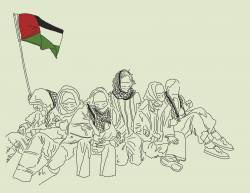On April 2, the College dean’s office issued the spring edition of The College, the online newsletter for students. An easy-to-ignore section near the top, pointed to the possibility of a major shift in the way the College approaches core requirements. Associate Dean Anne Sullivan is conducting a review of the College curriculum measuring the number of diversity-related courses offered. Sullivan’s investigation will evaluate the College’s handling of such issues, especially in core requirements. The College should go farther and incorporate diversity-related courses into its requirements.
Obviously, any oversimplification of “diversity” would have dire consequences. Courses designed to fulfill such a requirement should not just preach tired clich?s about appreciating racial differences or impart a superficial knowledge about a particular culture. Effective classes need to study larger concepts and interactions, giving students a broader, more complex and pluralistic understanding of society rather than suggesting an “otherness” of minorities. An easy way for the administration to incorporate a diversity requirement into the curriculum without adding to the number of core requirements would be to make a list of all the classes from departments such as social science or history that focus on diversity issues. Students could choose one or more of their already required classes from this list.
According to Sullivan, such a requirement had been recently recommended, but subsequently rejected by the College Curriculum Committee. She stated that her current evaluation is strictly “post-analysis” and that an active proposal for a diversity requirement no longer exists, though it has not been ruled out as a possibility. While “diversity” is inherently difficult to define, we applaud the administration for at least evaluating diversity’s presence in our curriculum and encourage them to reconsider the proposition.
Regardless, a diversity requirement should be only one step toward solving the University’s larger problem: the lack of representation for certain cultures and issues. Without a larger commitment to further diversifying the student body and promoting inter-cultural relations, the effectiveness of a diversity requirement would be severely weakened. We must work tirelessly to diversify Georgetown’s campus, but until this larger goal is achieved, a diversity requirement can help rectify this problem.




